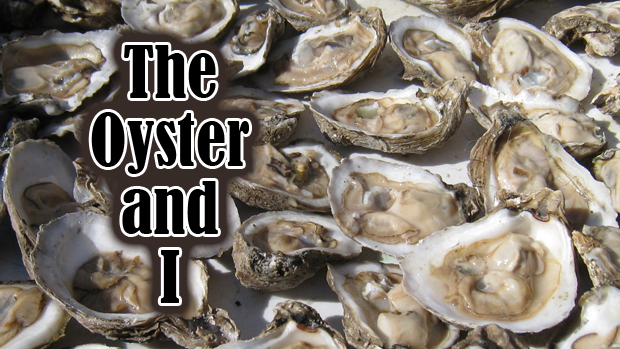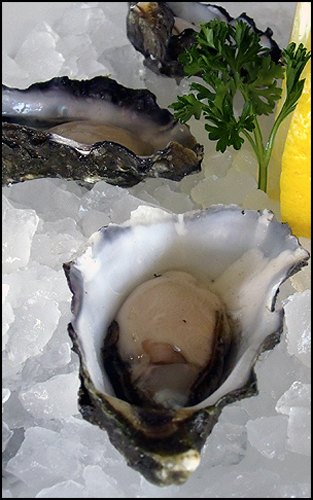
 Unlike some, I don’t remember my first oyster as epiphanic.
Unlike some, I don’t remember my first oyster as epiphanic.
That’s no reflection on the oyster, which I’m certain was good, plump and fresh from the Gulf, arguably among the best in the world, but I ate it on my first trip to Jackson, which was a rather heady affair for a 7-year old boy from a sawmill village in north Mississippi.
After the rush of seeing the upper Rez from the Trace, riding in a highway patrol cruiser (for the last time as a guest) and ogling at the Capitol dome, eating oysters at the Mayflower seemed a pedestrian experience. The magenta hairdos of the waitresses made far more of an impression at the time than the shellfish. I’d never seen a woman with real dyed hair before, and when one of them took her shoe off to bang on a table to shush some idiot from Atlanta who wanted something unreasonable like a poached egg, I tried to die three times and left her all the change I had in my pockets to keep her from taking a swat at me.
Oysters enjoy a sex life that makes a human bisexual lifestyle seem lame. Oysters actually switch their sex according to a variety of environmental factors, which means that if you’re a young oyster (a spat), one season your Uncle Louie might be your next season’s Aunt Louise. Not only that, but oysters reproduce by spewing their sperm and eggs into the water around them in a ubiquitously impregnating haze, which is the human equivalent of having desperate yet sincere sex with someone at some distance from you in a Jacuzzi.
 Any encouraging words of prolific reproduction and growth among oysters strike a chord of extreme indifference among those people who rate the oyster as a food on par with nasal mucus, but those of us who hold the mollusk in the highest esteem find it heartening. Oysters were once so plentiful in American coastal waters that no meal that aspired to distinction was complete without them, but since the first decades of the last century the mollusk has been in a rapid decline and the prices have escalated accordingly. If memory serves me right (a haphazard undertaking at best), the first oysters I ate, sometime around 1964, at the Mayflower, were a dime apiece, a dollar a dozen.
Any encouraging words of prolific reproduction and growth among oysters strike a chord of extreme indifference among those people who rate the oyster as a food on par with nasal mucus, but those of us who hold the mollusk in the highest esteem find it heartening. Oysters were once so plentiful in American coastal waters that no meal that aspired to distinction was complete without them, but since the first decades of the last century the mollusk has been in a rapid decline and the prices have escalated accordingly. If memory serves me right (a haphazard undertaking at best), the first oysters I ate, sometime around 1964, at the Mayflower, were a dime apiece, a dollar a dozen.
Nonetheless, it was a pivotal culinary experience, if only because I am not afflicted with the squeamish distaste with which some people regard raw oysters. It comes as no surprise to me that the very reasons most people find oysters objectionable – the taste and the texture – are the very reasons I find them appealing.
Eating a raw oyster is like sneaking a spontaneous kiss from the ocean: a wet, slightly salty, totally sensuous experience unbridled by any sort of fussy preparation. I’m firmly convinced that anyone who doesn’t enjoy oysters is a bad kisser, and I have centuries of documentation to back me up in this opinion. Oysters have enjoyed a reputation as an aphrodisiac for millennia; Casanova was known to consume several dozen at breakfast in order to fortitude himself for his day’s revelries, and their consumption has been condemned at every conservative turn of the human compass as a food likely to “incite Venus”. Now that I am well past the salad stage of life and forging steadily towards dessert, I firmly intend to keep oysters a mainstay between courses, and if the good Lord is willing I shall have them with my cordial.
Having said all this, I must admit that my passion for the oyster in the raw is not unadulterated. I once enjoyed my oysters most with a dab of good homemade cocktail sauce and a saltine cracker, but some years ago, I enjoyed Pacific oysters in Seattle where the tomato-based cocktail sauce as we know it is rarely used. Instead, they offer their oysters with a much lighter sauce more in tune with the sublime tastes and textures of the animal as it comes to the lips, quivering in its nakedness. Here is my recipe for a similar sauce, which I urge you to try.
Mignonette Sauce with Oil
Combine 2/3 cup wine vinegar, 1 tablespoon olive oil, 1 tablespoon crushed black peppercorns and 3 tablespoons finely minced shallots in a sealable glass container. Shake and refrigerate. Shake very well before dribbling over fresh oysters.


